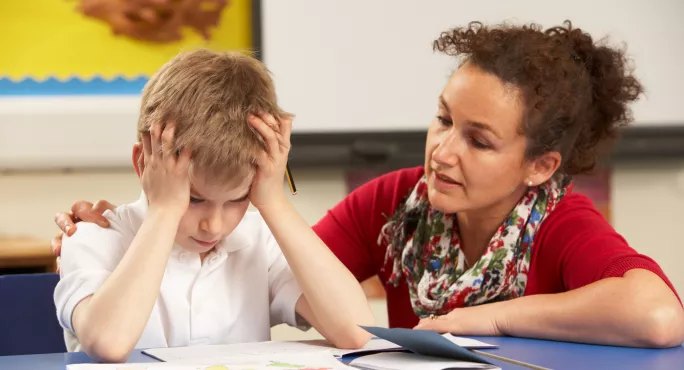6 ways teachers can help pupils with dyspraxia

Despite showing classic symptoms as a child and young adult, I was only diagnosed with dyspraxia in my 30s.
Awareness has grown to the point where I could receive a diagnosis, but it is still a condition misunderstood by society at large. Although thankfully, understanding within the educational community has improved.
Even so, there is still much teachers can learn about this condition and how to make adaptations for pupils with this condition.These are my top tips for supporting students with dyspraxia in the classroom:
1. Understand - but don’t assume
Dyspraxia, dyslexia, ADHD and ASD all share similar traits which make people “neurodiverse”. Just as it is not good enough to assume someone with dyslexia simply has trouble reading, a student with dyspraxia should not be dismissed as “not good at PE”. In my career, I have heard both used.
People with neurodiversity can display problems with memory, organisation, time management, sequencing, poor listening skills and speech which can often lead to frustration, anxiety and depression when not supported properly. All of these things combined can make school an overwhelming and difficult experience for those who are neurodiverse.
We should never assume because a student is high attaining that they are not finding things hard - people with processing difficulties have to work 10 times harder to make sense of the world.
Being dyspraxic does not affect someone’s intelligence. In fact, those who are neurodiverse can be incredibly intelligent and creative.
Listen: What teachers need to know about dyslexia
Background: Help at hand for dyspraxic pupils who suffer
More: Everything you need to know in education this week
2. Keep teacher talk to a minimum
Listening and processing information is a difficulty associated with dyspraxia.
I once described listening to long pieces of information as if it was in French - my brain is slowly trying to translate what you are saying while at the same time keeping up with the next bit of information. After about 20 minutes somebody with processing difficulties will reach saturation point where their brain cannot keep this up and will switch off.
Even as an adult I frequently doodle while I am listening because it is a way of being able to process what I am hearing. Providing some students with space to do this (doodle books, scrap paper etc) can help to organise thoughts.
Students may look off-task but actually this will help them to process the information they have been given.
3. Keep tasks short and simple
Students are frequently presented with information overload in the classroom - PowerPoint presentations and worksheets in particular can be too busy.
Although visuals are a great idea to support information on the whiteboard, too many visuals, like lots of colours and texts can be overwhelming. Keep things simple and keep tasks short and sharp - regular tasks should not take more than 10-15 minutes.
Giving students printouts and handouts are a good idea too - they can then refer back to them throughout the lesson.
And remember: keeping lesson delivery simple does not mean the lesson itself isn’t challenging and having an impact.
4. Repeating instructions
People with dyspraxia tend to have poor short-term memories so it is really important instructions are repeated regularly and you ensure students are on the right path to any task or goal they have been set.
Make sure examples and instructions are visual: for example, on a board or on paper and that they are clear and well scaffolded.
5. Questioning
Often as teachers we ask a question in a classroom, we get an answer and move on.
But for students who have processing difficulties, they may still be thinking of the answer while you have moved on and then may not have the opportunity to contribute. Therefore, try to give time to allow students to think through your question rather than choosing hands that shoot straight up.
Students with processing difficulties may also often come out with answers you may not even have thought of which can serve as a great discussion point or avenue for further learning ideas.
6. Have patience
It can be frustrating when a student is constantly losing things, spends ages getting changed from PE or is slow at getting packed up at the end of the lesson.
But for those with dyspraxia navigating a school building can be hard work, especially having to pack and unpack their bags multiple times a day and remembering to take everything they need.
Please be patient with them.
Laura Sollars is head of humanities at a secondary school in England
You need a Tes subscription to read this article
Subscribe now to read this article and get other subscriber-only content:
- Unlimited access to all Tes magazine content
- Exclusive subscriber-only stories
- Award-winning email newsletters
Already a subscriber? Log in
You need a subscription to read this article
Subscribe now to read this article and get other subscriber-only content, including:
- Unlimited access to all Tes magazine content
- Exclusive subscriber-only stories
- Award-winning email newsletters
